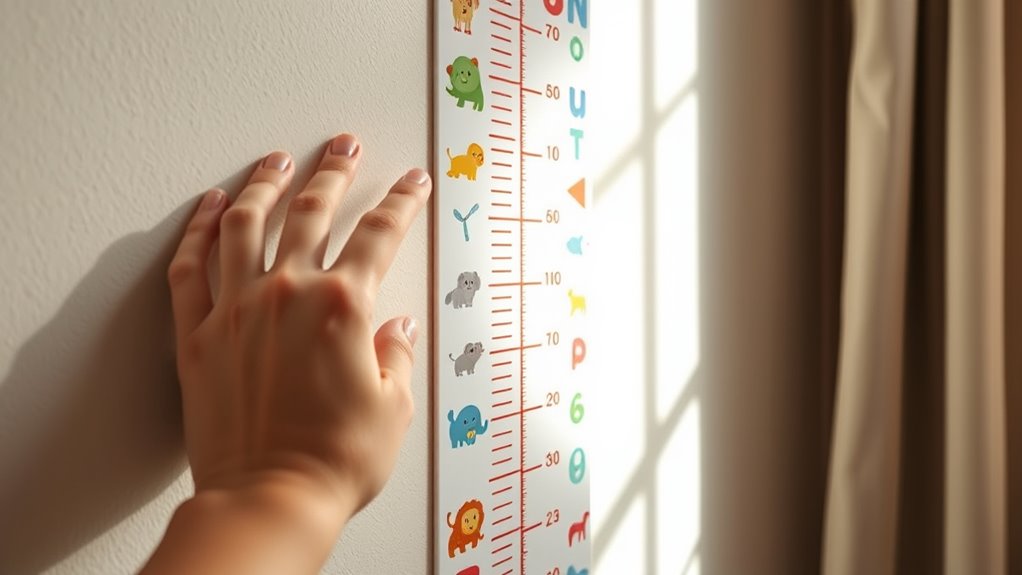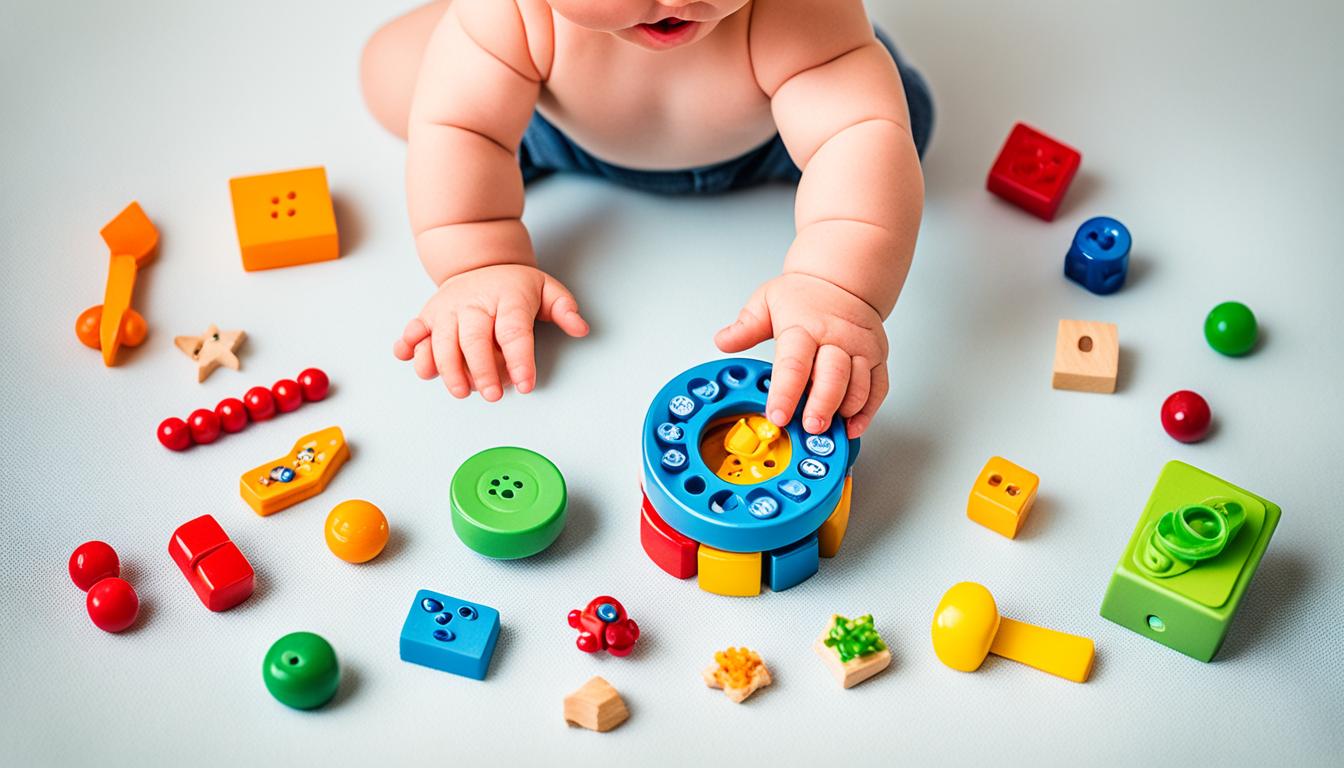To know if your baby is growing normally, regularly track their height, weight, and head circumference using growth charts tailored for their age. These charts help you see if their measurements follow typical patterns and alert you to any significant deviations. Remember, some variation is normal, but consistent monitoring provides peace of mind and early signs of potential concerns. Keep an eye on milestones and consult your pediatrician if you notice anything unusual; there’s more to understand as you explore the basics.
Key Takeaways
- Regularly measure your baby’s height, weight, and head circumference and plot them on growth charts for comparison.
- Understand that some variability in growth is normal; consistent measurements within typical ranges indicate healthy development.
- Sudden drops or measurements below the normal range may signal a need for professional evaluation.
- Proper nutrition, including breastfeeding or a balanced diet, supports steady growth and development.
- Consult your pediatrician regularly to interpret growth patterns and address any concerns early.

If you’re concerned about your child’s growth, understanding growth charts can help ease your worries. These charts are valuable tools that allow you to track milestones and see how your baby compares to typical growth patterns. When you regularly monitor your child’s measurements—such as height, weight, and head circumference—you can spot any deviations early on and discuss them with your pediatrician. Remember, growth charts aren’t just about numbers; they tell a story about your child’s health and development. They help you understand whether your baby is growing steadily or if there might be underlying issues that need attention. Regular use of growth charts can also help identify potential growth concerns before they become more serious.
Tracking milestones on growth charts is essential because it provides a visual reference for your child’s progress. For example, if your baby is consistently following a growth curve that aligns with their age, it’s a positive sign they’re developing normally. Conversely, if you notice a sudden drop or if your child’s measurements fall below the typical range, it’s worth consulting your doctor. This doesn’t mean there’s a problem, but it does mean you should get professional guidance to rule out any concerns. Growth charts are especially helpful because they take into account the natural variability among children, so you can better understand whether your child’s growth is on track or if interventions might be necessary.
Nutrition tips play a fundamental role in supporting healthy growth. Ensuring your baby gets a balanced diet tailored to their age can make a significant difference. For infants, breastfeeding or formula provides essential nutrients for early growth, but as they transition to solids, offering a variety of foods rich in vitamins, minerals, and healthy fats is key. Incorporate plenty of fruits, vegetables, whole grains, and protein sources to support their developmental needs. Keep in mind that growth isn’t solely about quantity; quality matters too. Regularly consulting with your pediatrician can help you refine your nutrition plan and adjust feeding routines as your child’s needs evolve.
Understanding growth charts and tracking milestones can also give you peace of mind. It reassures you that your child’s development aligns with typical patterns, while also highlighting areas where you can support their growth better. Remember, every child develops at their own pace, so slight variations are normal. What’s most important is consistent monitoring and open communication with your healthcare provider. By combining regular check-ups, attentive tracking, and good nutrition, you’re doing your part to make certain your baby grows healthy and strong.
Frequently Asked Questions
How Often Should I Check My Baby’S Growth Chart?
You should check your baby’s growth chart regularly, ideally during well visits or check-ups. This helps you track milestones and feeding patterns over time. While daily monitoring isn’t necessary, reviewing the chart every few months allows you to notice any significant changes or concerns. Consistent tracking provides insight into your baby’s development, giving you peace of mind and enabling prompt discussions with your healthcare provider if needed.
What if My Baby’S Growth Falls Outside the Normal Range?
Imagine your baby’s growth pattern as a delicate river steering its course. If it veers outside the normal range, don’t panic. It might just be crossing a bend or a small obstacle. Consult your pediatrician to review developmental milestones and make sure everything’s on track. They can help interpret the chart’s signals, determine if further tests are needed, and guide you toward supporting your baby’s healthy growth journey.
Are Growth Charts Accurate for Premature Babies?
You might wonder if growth charts are accurate for your premature infant. While standard charts provide a helpful baseline, modifying growth standards is essential for premature babies. Pediatricians use specialized charts for premature infant tracking, which account for gestational age and development differences. These adjusted standards give a more accurate picture of your baby’s growth, helping ensure they’re on the right developmental path and allowing for appropriate support if needed.
Can Growth Charts Predict Future Health Issues?
Think of growth charts as a crystal ball—while they give clues about your baby’s health, they can’t predict future issues. You understand that genetic factors and environmental influences shape growth, but many variables can change over time. So, don’t rely solely on charts to foresee future health problems. Instead, consult your pediatrician regularly, who can interpret growth patterns within the broader context of your child’s overall development.
Do All Children Grow at the Same Rate?
Not all children grow at the same rate, so don’t worry if your baby hits developmental milestones at different times. Every child has a unique growth rate influenced by genetics and environment. Growth charts help track these patterns, but they’re just a guide. Focus on your baby’s overall development, health, and happiness, rather than comparing growth rates to others. If you’re concerned, consult your pediatrician for personalized advice.
Conclusion
Remember, growth charts are just tools to help you track your baby’s progress. Every child is unique, and small variations are normal. If you notice your little one is off the chart, it doesn’t mean something’s wrong—sometimes, they just grow in their own way. So, next time you look at that chart, ask yourself: would I be worried if my child’s favorite tree grew a little taller or shorter than the others?










